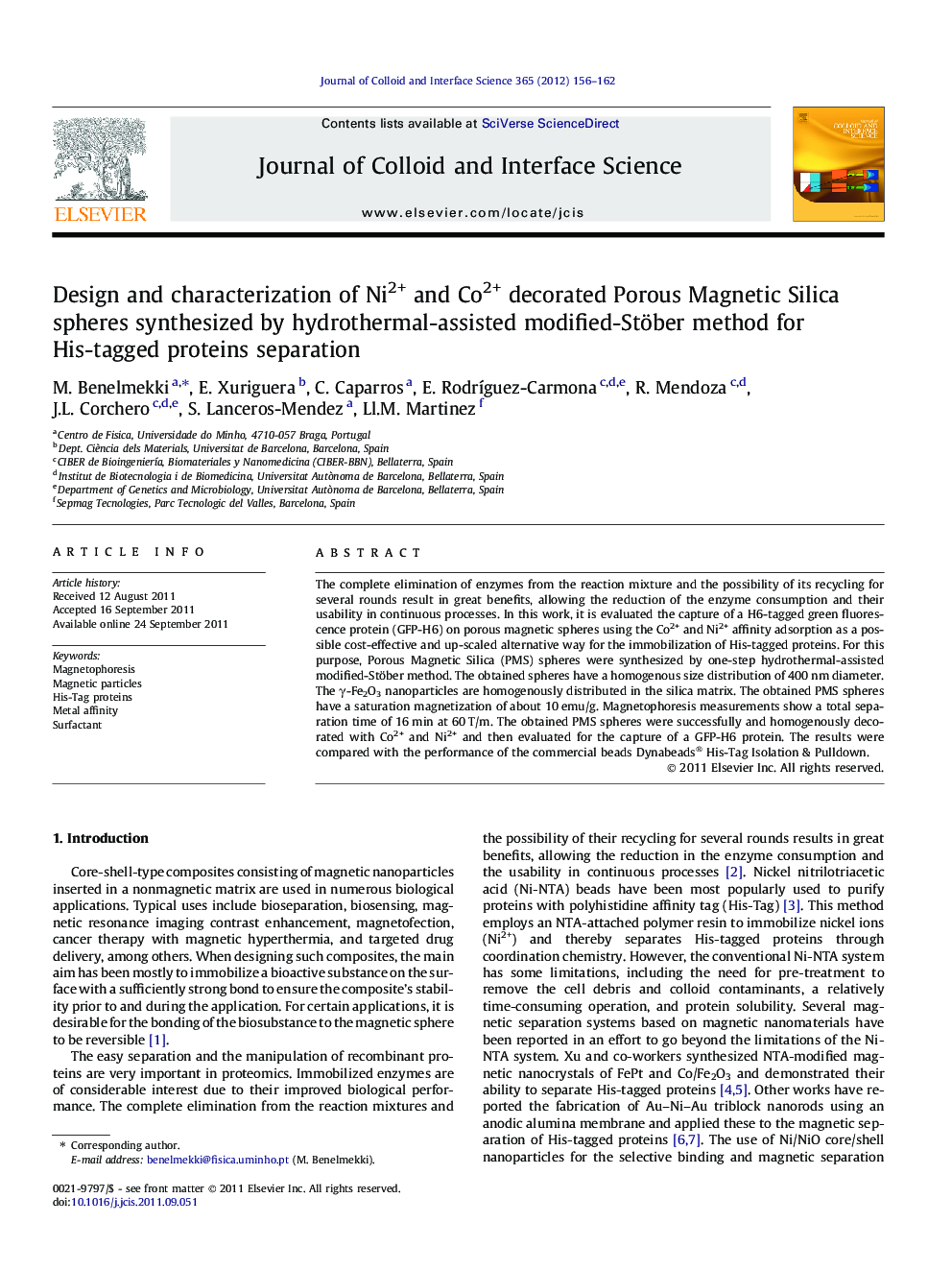| Article ID | Journal | Published Year | Pages | File Type |
|---|---|---|---|---|
| 608463 | Journal of Colloid and Interface Science | 2012 | 7 Pages |
The complete elimination of enzymes from the reaction mixture and the possibility of its recycling for several rounds result in great benefits, allowing the reduction of the enzyme consumption and their usability in continuous processes. In this work, it is evaluated the capture of a H6-tagged green fluorescence protein (GFP-H6) on porous magnetic spheres using the Co2+ and Ni2+ affinity adsorption as a possible cost-effective and up-scaled alternative way for the immobilization of His-tagged proteins. For this purpose, Porous Magnetic Silica (PMS) spheres were synthesized by one-step hydrothermal-assisted modified-Stöber method. The obtained spheres have a homogenous size distribution of 400 nm diameter. The γ-Fe2O3 nanoparticles are homogenously distributed in the silica matrix. The obtained PMS spheres have a saturation magnetization of about 10 emu/g. Magnetophoresis measurements show a total separation time of 16 min at 60 T/m. The obtained PMS spheres were successfully and homogenously decorated with Co2+ and Ni2+ and then evaluated for the capture of a GFP-H6 protein. The results were compared with the performance of the commercial beads Dynabeads® His-Tag Isolation & Pulldown.
Graphical abstractFigure optionsDownload full-size imageDownload high-quality image (74 K)Download as PowerPoint slideHighlights► Synthesis of Porous Magnetic Silica (PMS) by one-step cost-effective process. ► Decoration of the PMS spheres by Co2+ and Ni2+. ► Evaluation of the binding capacity of the PMS spheres to the H6-tagged GFP protein. ► Binding capacity depends strongly on the amount of cations adsorbed by the PMS spheres.
